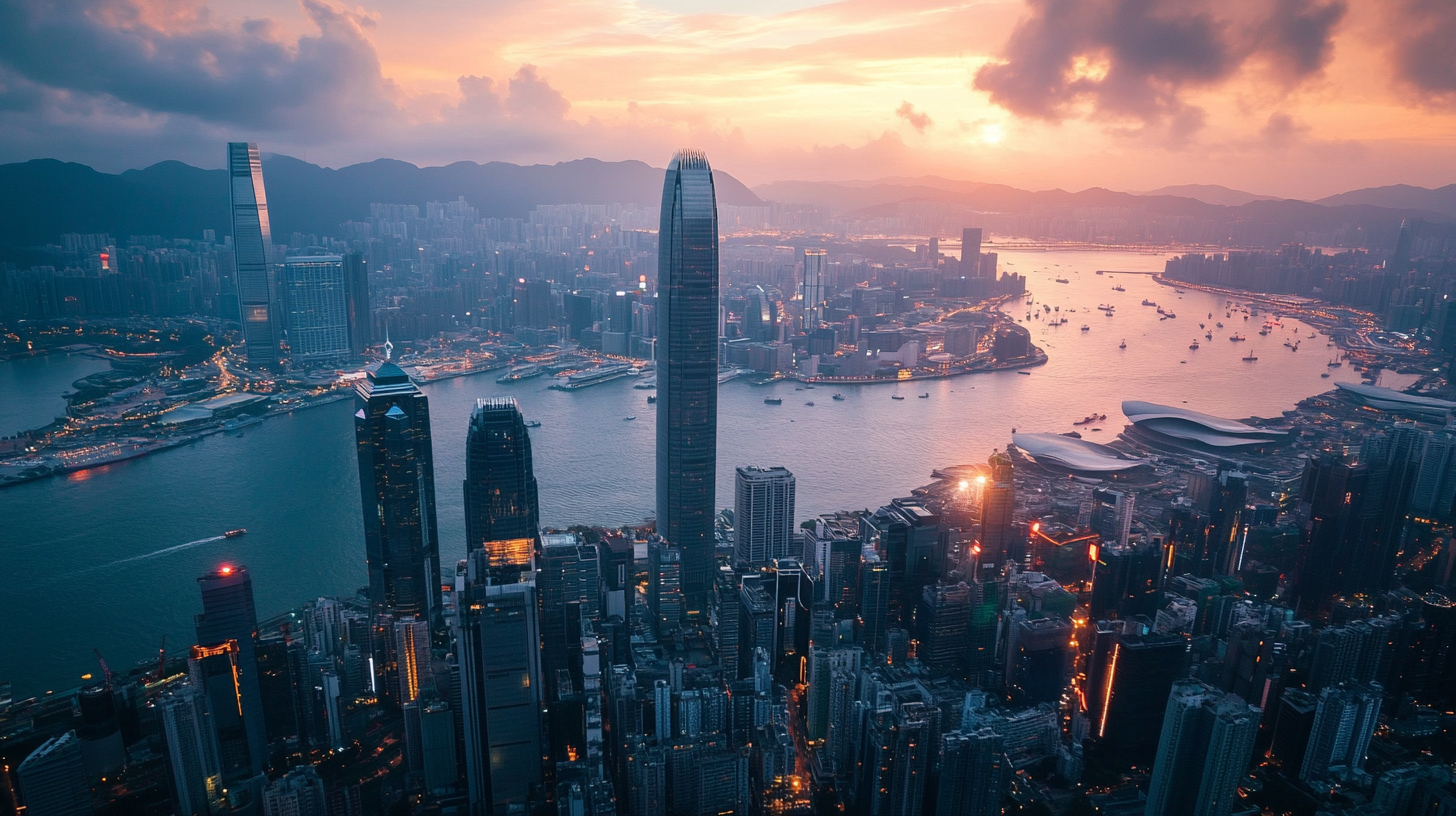Blog
- Home
- Blog
Unlocking Quality Suppliers in the Green Energy Solar Market for Global Buyers
As the global movement towards sustainability intensifies, the importance of the Green Energy Solar market cannot be overstated. According to the International Energy Agency (IEA), solar power capacity is expected to lead the renewable energy charge, reaching over 1,000 GW globally by 2023. This rapid expansion is driven by technological advancements and declining costs, which have made solar energy an increasingly viable option for energy generation. Consequently, businesses and individuals alike are seeking to align their practices with sustainable solutions, leading to an unprecedented demand for quality suppliers in this sector.
In this burgeoning landscape, global buyers are tasked with identifying reliable partners who can meet their needs for high-quality solar products and services. A recent report by the International Renewable Energy Agency (IRENA) highlights that the solar market is predicted to generate up to 24 million jobs worldwide by 2030, emphasizing the critical role that suppliers play in this ecosystem. By establishing connections with trusted suppliers in the Green Energy Solar market, businesses can not only ensure their commitment to sustainability but also position themselves competitively in an increasingly green-oriented economy.

Identifying Key Qualities of Reliable Solar Suppliers in the Green Energy Sector
In the rapidly evolving green energy solar market, identifying reliable suppliers is crucial for global buyers seeking to reduce dependency on traditional supply chains, particularly those linked to China. Recent developments highlight the importance of local manufacturing capabilities, as exemplified by Winstar Capital’s collaboration with the Malaysian government to enhance domestic solar product manufacturing. This strategic shift not only aims to cater to local demand but also to provide alternatives to the heavily reliant Chinese suppliers. A recent report highlighted ongoing concerns regarding forced labor in the solar supply chain, especially linked to companies with operations in Xinjiang. Despite commitments from hundreds of companies to ensure labor ethics in their supply chains, major manufacturers continue to maintain significant ties with Xinjiang, complicating the landscape for ethical sourcing. Consequently, global buyers must prioritize suppliers who demonstrate transparency and accountability, ensuring ethical practices throughout their operations. Moreover, emerging players like Xinguang Energy are positioning themselves as comprehensive solar solution providers in Europe, with systems tailored to diverse needs. Their offerings underscore the growing market demand for scalable solar solutions, where the smallest systems require around 20 to 30 square meters, while larger installations can cover up to 135 square meters. This adaptability is essential in catering to various customer requirements, further emphasizing the need for reliable and innovative suppliers in the sector. As noted in recent news, established companies like Sunnova are taking significant steps towards growth, including an upcoming IPO in the United States. This trend signals a robust investment interest in the solar market, highlighting the critical need for global buyers to engage with trustworthy suppliers that can navigate this complex and dynamic market landscape.

Navigating the Selection Process: Tips for Global Buyers in Solar Procurement
In today’s evolving green energy landscape, global buyers seeking quality suppliers in the solar market must navigate a multifaceted selection process. A critical aspect of this journey is the adoption of sustainable procurement practices that align with both economic and environmental objectives. By prioritizing suppliers that demonstrate a commitment to sustainability, buyers can ensure not only the quality of their products but also their contribution to a greener planet.
The selection of solar suppliers should encompass an evaluation of their entire operational process, from sourcing materials to manufacturing energy-efficient products. Recent trends emphasize that cost should not be the sole determining factor; rather, energy efficiency ratings also play a significant role in making procurement decisions. This shift is reflected in various domestic practices that highlight the importance of integrating sustainability criteria into purchasing decisions, resulting in long-term savings and greater environmental benefits.
Moreover, global buyers must leverage available tools and resources to streamline their procurement process. Utilizing certifications and subsidies related to energy-efficient products can significantly enhance a buyer’s capacity to make informed choices. As the solar market continues to grow, embracing these practices not only assures quality suppliers but also propels the industry toward a sustainable future that benefits everyone.

Assessing Environmental Standards: Ensuring Sustainability in Supplier Choices
In the ever-evolving green energy solar market, the selection of suppliers with robust environmental standards is crucial for global buyers. As the world increasingly recognizes the importance of sustainability, assessing a supplier’s commitment to environmentally friendly practices has become a necessary criterion. This involves looking not only at the materials used in solar products but also at the entire lifecycle of their production, from sourcing raw materials to end-of-life disposal.
One key aspect to consider in evaluating suppliers is their adherence to recognized environmental certifications. Suppliers that comply with standards such as ISO 14001 demonstrate a commitment to minimizing their environmental impact. Furthermore, it is imperative to assess the transparency of the supplier's supply chain, ensuring that all components are produced in a sustainable manner. By prioritizing suppliers who are dedicated to reducing carbon footprints and waste, buyers can make informed decisions that align with their own sustainability goals.
Engaging with suppliers who actively invest in renewable energy and support local ecological initiatives can also enhance sustainable practices within the supply chain. This not only fosters a positive image for businesses but also contributes to community development and environmental conservation. As global buyers navigate the complexities of the solar market, making environmentally conscious choices in supplier selection will be instrumental in driving forward the green energy revolution.

Building Strong Partnerships: Strategies for Collaborating with Solar Suppliers
In the rapidly evolving green energy sector, building strong partnerships with quality suppliers is essential for global buyers looking to navigate the solar market effectively. Recent developments highlight the importance of collaboration in enhancing renewable energy adoption. For instance, initiatives like the distributed solar and storage network in Southern California demonstrate how local utilities are leveraging partnerships to meet peak demand while ensuring energy efficiency for consumers.
Successful partnerships in the solar industry are often characterized by shared goals, transparency, and a commitment to innovation. By collaborating with suppliers, companies can unlock access to cutting-edge technology and integrated energy solutions. The joint ventures seen in various regions, such as solar capacity development in Taiwan and procurement agreements in Europe, showcase how strategic alliances can drive significant capacity expansion and sustainability efforts.
Moreover, as the residential solar storage market is projected to experience remarkable growth over the next decade, the role of partnerships becomes increasingly vital. Suppliers equipped with advanced energy storage technologies will be pivotal for buyers seeking reliable solutions to meet the rising energy demands of consumers. Partnering with established players in the solar market not only bolsters a buyer’s supply chain but also enhances their competitive edge in an increasingly crowded marketplace. Hence, fostering strong relationships with quality suppliers can be the key to unlocking new opportunities within the green energy landscape.
Market Trends: Understanding the Evolution of the Green Energy Solar Landscape
The green energy solar market is experiencing a significant transformation as it adapts to the growing needs of global buyers. With a projected market size growing from $20.567 billion in 2024 to $64.744 billion by 2032, we are witnessing a remarkable compound annual growth rate of 15.41%. This evolution is largely driven by the increasing demand for sustainable energy solutions and a heightened awareness of environmental issues. As renewable energy continues to take center stage, suppliers in the solar sector are pivoting towards innovative technologies and practices that emphasize efficiency and sustainability.
Market trends indicate a shift in procurement strategies, where buyers are now focusing on quality and reliability when selecting suppliers. This change is partly attributed to the heightened competition in the green energy landscape and the need for businesses to align with brands that prioritize environmental, social, and governance (ESG) criteria. Furthermore, the surge in solar installations across various industries underscores the importance of establishing strong partnerships with reputable suppliers who can deliver high-quality products and services while adhering to regulatory standards.
As the green energy solar market evolves, understanding these trends is crucial for global buyers looking to make informed decisions. By unlocking access to quality suppliers, businesses can ensure they remain competitive in an industry that not only seeks to innovate but also aims to contribute positively to the planet. Emphasizing the importance of reliable, sustainable sources will be key to navigating the future landscape of solar energy.